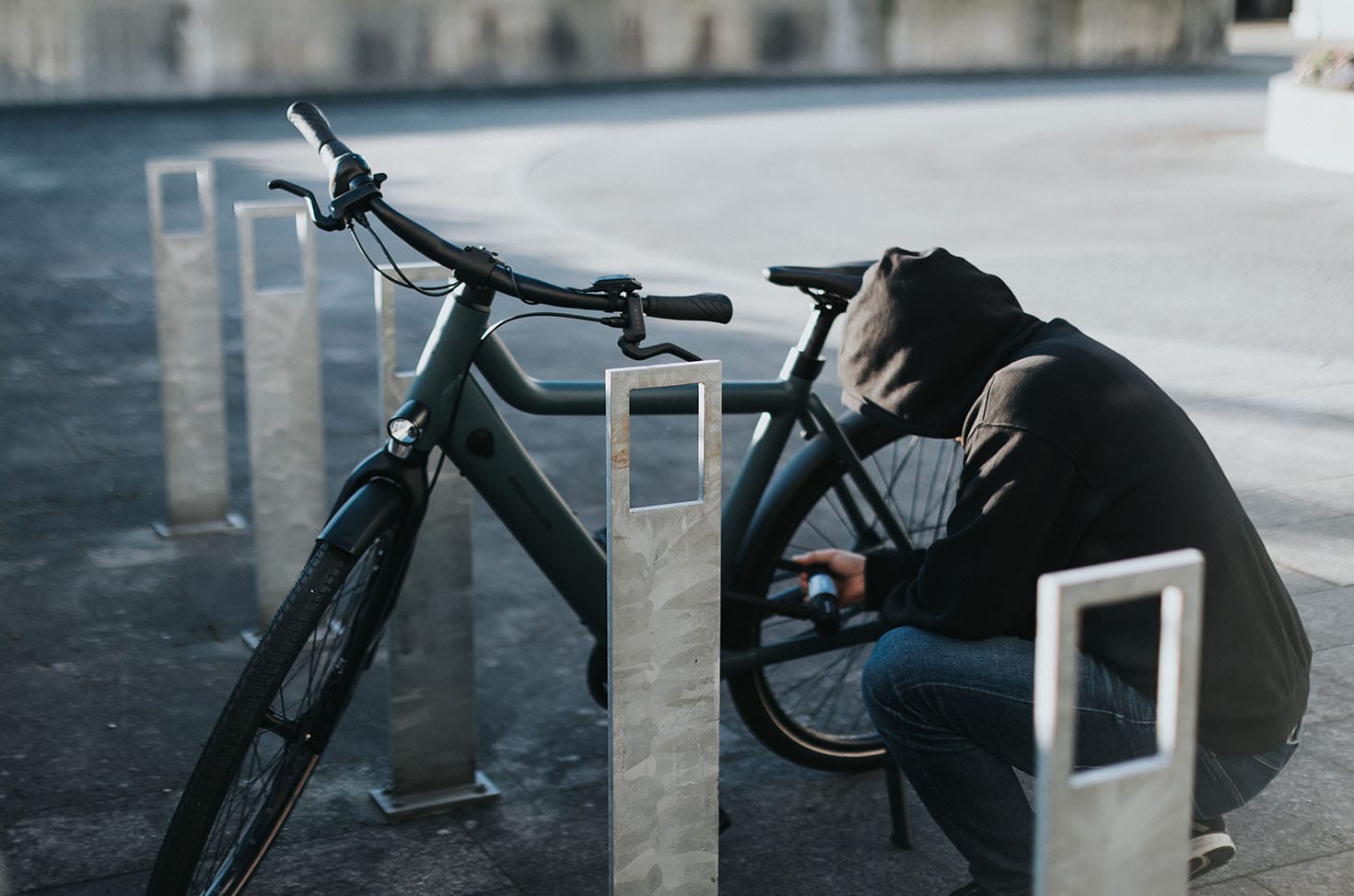The Rise of Organized Bike Theft
How bike theft has evolved and how to fight back
Bike theft has been a persistent problem for cyclists everywhere, but recent years have seen a concerning shift. No longer is bike theft limited to opportunistic snatches by thieves looking for a quick ride or fast cash. Now, we’re seeing a rise in organized bike theft rings that operate with a disturbing level of skill, sophistication and brazenness. These professional thieves carry portable angle grinders, cordless screwdrivers and may even scope out neighborhoods using trucks equipped with ladders to swipe high-end bikes from second-story balconies. They may even use fitness apps like Strava to trace your route back home, learning your bike’s storage location.
Sophisticated tactics and intermediate storage
These organized rings operate like professional syndicates, with strategies that go far beyond snatch-and-grab. One of the most striking changes is how these thieves handle the stolen bikes. They often use intermediary storage locations where the bikes are professionally packed and well cared for. Some rings even operate on theft order lists, stealing specific makes and models requested by their clients. The stolen bikes are then prepared for resale, often being shipped across borders or sold through underground channels.
Organized bike thieves use various methods to target high-value bikes, they often:
- Come prepared: With specialized tools like bolt cutters, angle grinders, screw drivers and vehicles for quick getaways. Thieves use these tools not only to cut locks but also to remove potential trackers hidden under the engine cover within ebikes– a well known hiding spot for trackers amongst thieves.
- Operate in teams: They work in coordinated groups, allowing them to scope out areas and strike efficiently.
- Utilize intermediate storage: After stealing a bike, they don’t immediately sell or dismantle it. Instead, they use temporary storage locations as a holding period to avoid detection.

This intermediate storage phase is critical because it presents the best opportunity for recovery using tools like bike trackers. These storage locations range from public spaces, like supermarket bike racks and public buildings, to more concealed spots like abandoned buildings, rented storage units and garages.
The silver lining
Despite this alarming rise in organized crime, there is a silver lining. This new method of operation has made it somewhat easier to track and recover stolen bikes. Unlike random thefts where bikes quickly disappear into the urban landscape, organized crime rings tend to store stolen bikes together in a centralized location. This period typically lasts a few days and is when BikeFinder’s advanced bike tracking system is most effective in locating stolen bikes. With specialized antennas and multi-signal technology tracking, BikeFinder can help authorities identify these storage spots, leading to the recovery of not just one bike, but often multiple bikes at once and sometimes other criminal activities.
Real-world incidents of organized bike theft
Organized bike theft is now a global trend, with thieves operating with increasing sophistication. In Amsterdam, many stolen bikes circulate locally, while others enter underground resale markets, underscoring the city’s struggle with bike theft. In Colorado, a “bike mafia” has turned theft into a multi-million-dollar industry, using power tools and networks to dismantle and sell bikes (source: The Rooster). The UK recently saw a gang sentenced for stealing hundreds of bikes, highlighting the scale of the challenge faced by law enforcement (source: road.cc).
This problem crosses borders; an international ring in Slovakia revealed how stolen bikes are trafficked between countries (source: AGOGS). Even cycling events aren’t safe. During a Yorkshire festival, thieves stole high-end bikes despite security measures (source: road.cc). The theft of professional racing bikes from Shimano Europe in Germany shows that not even top-level security can deter these criminals(source: MTB News).
The role of BikeFinder in combating organized theft

Recognizing the evolution of bike theft, BikeFinder was built to find the bike after theft, not just to track it in real-time. It took four years of research and development to create the smallest multi-signal technology tracker in the world, capable of fitting any bike, and versatile enough to function effectively in different environments. Available in 35 countries, BikeFinder’s advanced technology includes specialized antennas and a battery that can be integrated with both human powered bikes and e-bike electrical systems.
One key advantage BikeFinder brings is its data-driven approach. By gathering insights on theft trends, BikeFinder has identified patterns that are helping law enforcement track down organized crime rings. Unlike random thefts, organized theft operations are more predictable. They often store multiple bikes in one place, allowing for large-scale recoveries when authorities identify a storage hub. This has motivated police departments to allocate more resources to combating bike crime, many of whom are now partnering with BikeFinder.
Hope in the fight against bike theft
Bike theft has undoubtedly evolved, with organized crime rings posing a significant threat to cyclists everywhere. Yet, as these thieves become more sophisticated, so do the tools and strategies to fight back. BikeFinder offers a practical, tech-driven solution that is already turning the tide in favor of cyclists and law enforcement. By staying informed, using advanced bike tracking, and taking proactive security measures, cyclists can protect their bikes and contribute to dismantling these theft networks. Now is the time to secure your ride and outsmart the thieves.
Want to learn more about safeguarding your bike? Explore our website on how BikeFinder can be your ultimate line of defense.

